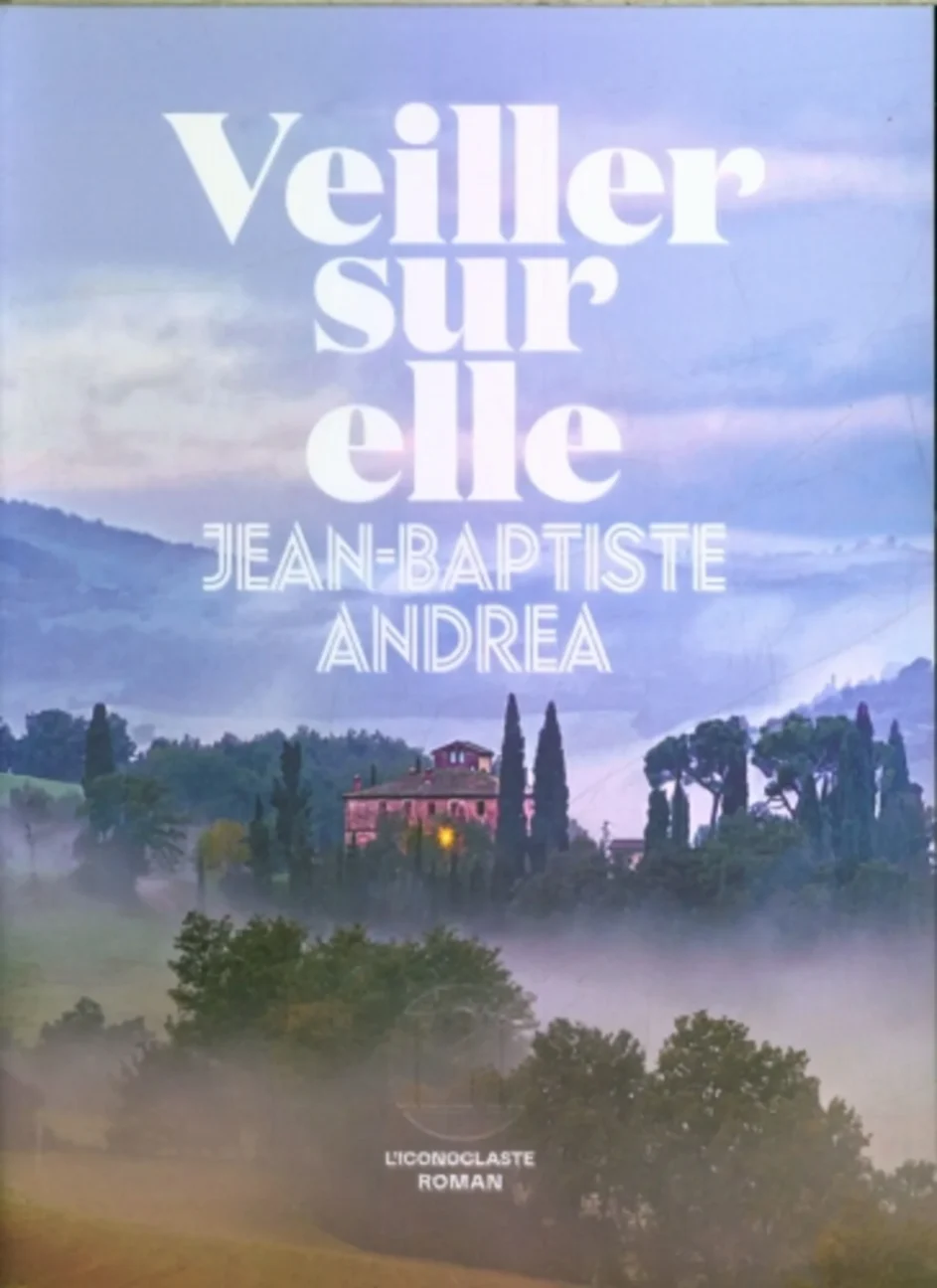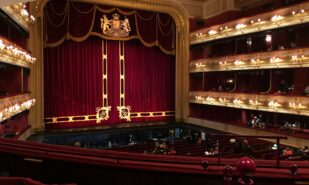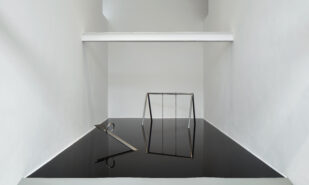In November 2023, members of the Goncourt Academy awarded the Goncourt Prize for the year 2023. It was presented to Jean-Baptiste Andrea, whose novel Veiller sur elle (in English its title is Watching Over Her) was published by the Paris-based publisherThe Iconoclast in August 2023. The list of nominees included 16 novels by French authors – among the main candidates for victory, French critics singled out the novel Sarah, Suzanne and the Writer by Eric Reynard, Humus by Gaspard Koenig featuring an ecologically themed story and the family drama Sad Tiger by Nège Sinno, that also won the Femina Prize, whose jury consists only of women. By the time the winner was awarded the Goncourt Prize (it has a cash equivalent of 10 euros, but affects the prestige of the writer and the sales of his books), Andrea had also won the Fnac Prize, awarded by the largest book retail chain in France.
The Artist and his time: Jean-Baptiste Andrea’s new novel about a sculptor in 1910-1940s Italy
My Queen, the writer’s debut novel (2017) is about the friendship of a boy Shell with special developmental needs and a girl with violet eyes Viviane. One Hundred Million Years and One Day (2019) is about palaeontologist Stan’s trek to the top of a mountain with two other scientist friends, Humberto and and Peter, to potentially find a dinosaur body preserved in the ice and make a great scientific discovery. Devils and Saints (2021) analyses the trauma caused in childhood and the world seen and heard through art.
Jean-Baptiste Andrea is a writer whose name was not associated with the world of literature until the age of 45. Andrea worked in the film industry, his credits as a director and screenwriter include Brotherhood of Tears(2013), Big Nothing (2006), Dead End (2003), as well as screenwriting work in King (2022) and Hellphone(2007). But at the age of 46, Andrea published his first book, and immediately established himself as an outstanding author with his own subject matter and aesthetics. For My Queen, Andrea won prizes for Best Debut Novel and the Femina Student Award, while his novel Devils and Saints has also won numerous awards, including the RTL-Lire Grand Prix Award. Important to Andrea are the themes of childhood and the source of conscientiousness and sincerity it provides, as well as the influence of art on our perception of life and the possibility of changing our lives through it. Interestingly, Andrea stayed true to these themes in his fourth novel. Perhaps for the first time in his career Andrea creates an epic work that traces the fate of an artist who has chosen to collaborate with a totalitarian regime. evokes associations with Thomas Mann’s Doctor Faustus and Gunter Grass’s The Tin Drum The protagonist of Andrea’s novel is a dwarf who stopped growing in early childhood, and we can assume that the symbolism of this parallel is borrowed from Grass, because the setting of Andrea’s novel is Italy in the 1910s-1940s, while the fact that he is also the sculptor (an artist) owes much to Mann’s novel about a composer.
This novel by the 2023 Goncourt Prize winner is a book of both the finest lyricism and stark frankness in its subject matter. The novel is about the relationship of historical time and the artist who lives in it. Its main question is how to preserve one’s soul and the ability to see beauty and creativity in a complex historical period that often requires ambivalent decisions and bargains with conscience. The novel’s protagonist and narrator, Michelangelo Vitagliani (one may note the obvious consonance of the surname to the Italian word vitameaning life), is a height-challenged French-born sculptor living in Italy of the 1910-1940s. He leaves his mother very early to be apprenticed to his sculptor uncle in Italy, and essentially lives the life of an orphan. There is a hidden allegory in his loneliness that leads us to Dante, because in the absence of a significant male figure, the character’s Beatrice (named Viola) becomes also a Virgil figure for the narrator as he proceeds through the continuing circles of hell.
The author placed his second novel on the border of Italy and France, and in the third novel the orphanage where the orphaned narrator was brought up was in the Pyrenees. This cross-country geography is continued in a new text. The only unexplained convention of the novel is that the narrator was born in France, the narrative is in French, but the whole action develops in Italy, without specifying in which language the hero, who is sometimes derogatorily called ‘il Francese’ – the Frenchman – thought and communicated with others. The entire narrative is structured as a long confession by a narrator, heard and read only by us, as the protagonist is actually dying in a remote Italian monastery, next to his greatest creation. It is a beautiful and unique sculpture, called ‘Pietà Vitaliani’, which has been inaccessible to the public for years. This account of the narrator’s life from birth to a certain point of no return, the secret we learn at the very end, is interspersed with stylistically neutral comments about his sculptural masterpiece, which everyone compares to Michelangelo Buonarrotti’s creation in Rome – La Pieta. It seems it has a strange effect on all those who see it, and scientists who have devoted their lives to studying the Pieta are struggling to explain this effect. Unlike the main story that carries the reader away, they look slightly artificial and may be slightly moralistic, and actually are not necessary for the core account.
The novel itself is an amazing story of the childhood, adolescence and adult life of our narrator, Mimo (as everyone calls him, since he can’t stand the name of his great namesake) Vitagliani. His ‘cosmic twin’ (as Mimo was declared by the girl herself) is Viola Orsini, daughter of the Marquis of Orsini, born, like him, in November 1904. There is a small detail – the narrator lied about the exact day of his birth, having seen the date of girl’s birthday a little earlier, for ‘cosmic twins’ can only be those born on the same day, and wanted to be one – this becomes the first in his line of little and not so little lies. The Orsini family, a noble family living here in the village of Pietra d’Alba (near Genoa and Savona) at Villa Orsini, will be linked with the narrator’s entire life, although at first he is just a dwarf to them, to be spanked on the arse to the accompaniment of villagers’ laughter.
The first brother, Virgilio, died during World War I when a train carrying Italian soldiers returning from the front on leave derailed in a major (real-life) railway accident in the Alpine valley of Morien in 1917. A second brother, Stefano, would become a security representative in Mussolini’s Italy, and a third brother, Francesco, would become a cardinal of the Roman Church, The future sculptor would complete one of his first works – a bear carved in stone- as a gift to the only girl in the family, Viola Orsini. From that time on he would reach a an equal footing with the Orsini brothers, going from being the apprentice to working as a midget in a circus in Florence, from drinking and hiring prostitutes to sculpture orders from the Fascist government, allowing him self-indulgent and excessive luxury.
The fragile Viola, who at the age of 16 tried to fly on a homemade flying machine to avoid being married off and broke her ribs and legs in the process, from her childhood teaches Mimo not only to create his sculptures by instinct, but also to learn the history of art. It is from her that he learns the names of Buonarotti and Fra Angelico, whose frescoes he will later secretly take her to see in Florence. The young girl in the novel is like a beautiful wise bird locked in a cage, who knows more than others, but has no rights even to travel to another city on her own. Growing up, Viola secretly sends 1920s newspaper clippings to Mimo, pointing out to him the signs of the danger of fascism in Italy and Germany. This Dantesque Beatrice of Andrea’s novel will become an eternal ideal love for the narrator, his moral guide, a conscience that he betrays several times. Thanks to her he still makes his most important moral choice in life when it might or might not be too late.
Mimo’s decisions are made in a constant struggle between the desire to prove to everyone that he is the greatest and most respected artist in Italy and the gradual realisation that the money he receives is being used to create sculptures for the Mussolini regime, and that by his actions he is betraying Viola and his own soul, thereby destroying rather than preserving it. The meaning of the title – ‘to watch over her’ – becomes clear through the relationship between Viola and Mimo, and means not only the preservation of his masterpiece in the monastery, but also the need to preserve moral purity in the hard times of the fascist regime that buys the artist with state orders and the luxury of life and other power tricks. A novel about the Faustian choice of the artist resembles a musical poem, in which the novel’s climax in 1930s Italy recalls the sounds of Shostakovich’s seventh symphony. A great novel about the most important choice one could make in the 20th and perhaps also the 21st century. Its world is as poetic and beautiful as it is inexorably harsh and terrible.






